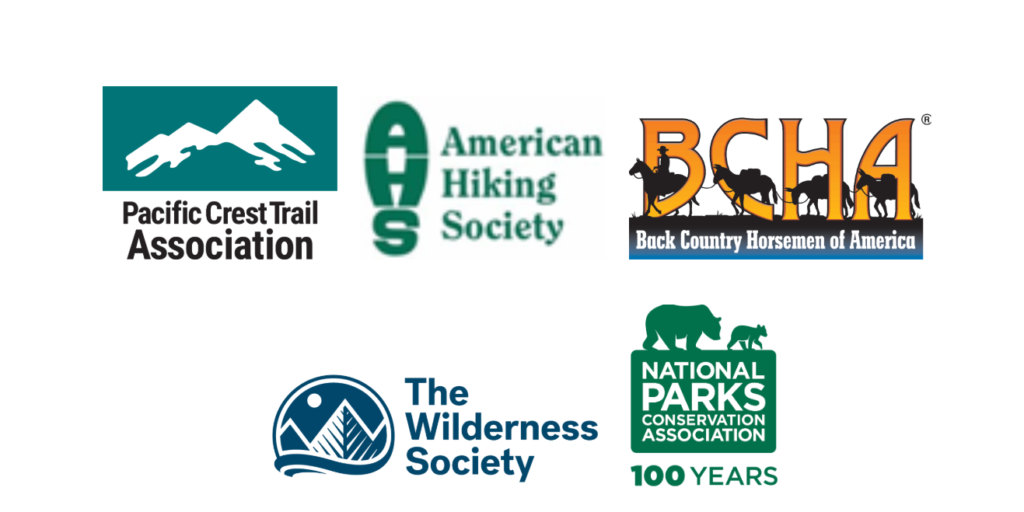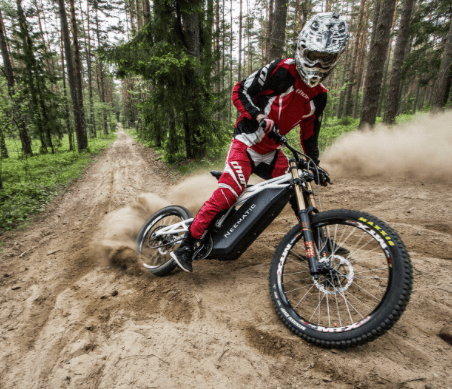FOR IMMEDIATE RELEASE
BCHA is leading the charge nationally to urge caution when allowing electric bikes on multi-use trails. Safety and compatibility concerns need to be considered.


Contact:
- Tyler Ray, American Hiking Society, tray@americanhiking.org, 301-565-6704 (x705)
- Randy Rasmussen, Back Country Horsemen of America, WildernessAdvisor@bcha.org, 541-602-0713
- Angela Gonzales, National Parks Conservation Association, agonzales@npca.org, 202-878-0359
- Mark Larabee, Pacific Crest Trail Association, mlarabee@pcta.org, 503-880-5987
- Michael Carroll, The Wilderness Society, michael_carroll@tws.org, 970-9469043
National Trail and Conservation Groups Blast New DOI E-Bike Order
Groups Fear Order Paves Way for Motorization of America’s National Trails, Parks and Public Lands
WASHINGTON, DC – National trail advocates and conservation organizations blasted the Department of Interior today for Secretary Bernhardt’s new order that could open non-motorized trails to all classes of motorized e-bikes (electric motorized bicycles). Trail advocates and conservation groups point out that the order undermines agency regulations and management rules, fails to consider impacts to hikers, mountain bikers, horse riders, and other recreationists, and may signal the beginning of the end for non-motorized backcountry trails, all while not including the public in the decision-making process.
“The Interior Department is rushing guidance on the use they haven’t properly evaluated for potential impacts to park natural and cultural resources, visitors or wildlife. Sadly, this new policy was created behind closed doors and with no public involvement,” said Kristen Brengel, Senior Vice President at the National Parks Conservation Association. “E-bikes have a place on national parks’ roads and motorized trails. But this announcement disregards well-established policies for how visitors can enjoyably and safely experience the backcountry in national parks. For generations, we’ve agreed that there are some places so special that they should be protected for visitors to enjoy away from the hustle and bustle of everyday life. This new policy carelessly ignores those longstanding protections for backcountry areas.”
Earlier this summer hundreds of trail advocates and conservation groups sent a joint letter to federal land management officials opposing any effort to allow e-bikes on non-motorized trails. The letter noted that non-motorized trails were created to ensure that the public could find recreational trail opportunities free from the ever-growing motorization. It pointed out that millions of public land users including hikers, backpackers, hunters, horse packers, climbers, mountain bikers and many more, value non-motorized trails for recreation. Opening non-motorized trails to motorized e-bikes would forever change the backcountry experience for many users.
“What has happened to the management of our public lands?” asked Darrell Wallace, Chairman of the Back Country Horsemen of America. “We’ve worked for decades to engage with these agencies, and other user groups, as partners in order to build and maintain a wonderful system of safe trails throughout the nation’s public lands. This abrupt change in long-standing policy came from below the radar—they didn’t bother to ask anyone’s opinion. What does this say to the thousands of volunteers who have played by the rules over the years? That the manufacturers of these motorized machines are more important than the citizens who use and maintain these trails, and the safety issues that accompany multi-use trails?”
Trail advocates and conservation groups are quick to point out that e-bikes should be welcomed on public lands but not everywhere and not on every trail. Conservationist and trail advocates are clear that e-bikes are motorized vehicles and should be managed as such. They point out that the existing motorized trail system provides plenty of opportunity for e-bikes use with tens of thousands of miles of trails on public lands, including many iconic trails, currently open to their use.
“The outdoors are for everyone, whether enjoying human-powered recreation or riding something with a motor. But sweeping changes to existing e-bike policy cannot be made without public input from all impacted user groups. Permitting e-bike use on trails that have been thoughtfully and specifically designated as non-motorized raises questions of safety and trail sustainability that must be considered,” said Tyler Ray, Director of Policy and Advocacy for the American Hiking Society. “Making this change behind closed doors undermines the long-standing collaborative relationships between trail users and federal agencies.”
“The Pacific Crest National Scenic Trail is designated for hikers and horseback riders and goes through 48 wilderness areas. While the trail enjoys great protections, threats to those quiet, non-mechanized forms of recreation are ever-present. Some people are working hard to open the PCT and all wilderness areas to mountain bikes. So far, Congress and federal land managers have rightly resisted these attempts,” said Mark Larabee, Associate Director of The Pacific Crest Trail Association. “The Pacific Crest Trail Association is not opposed to mountain bikes or e-bikes, and we believe they should have their place on public land. But we believe reclassifying battery-powered bikes as non-motorized not only would be illogical, it would displace mountain bikes without motors. More importantly, it would be a paradigm shift in otherwise sound government policy that could affect trails and wilderness areas across the country.”
“Let’s be clear e-bikes are motorized vehicles,” said Michael Carroll, Senior Director of the People Outdoors Program at The Wilderness Society. “Secretary Bernhardt’s policy change paves the way for the complete motorization of America’s remaining wild places. The Trump Administration has made it a standard practice to create new policies and management rules with industry behind closed doors and this is more of the same. This new policy will forever change the experience for backcountry trail users. Families that have sought out non-motorize areas to hunt, fish, hike, camp and simply get away from the noise and chaos of daily life will now have their special get-away spots opened up to motors.”
###


Deb Mathieu
Is the USFS liable for horse – bike accidents? By allowing both on same trail there will be some accidents; possibly bad ones. It was bad enough for a bike to go 20 miles an hour but e-bikes can potentially be faster, and a horse & rider have no noise warning to get off the trail.
We have built and maintained these trails according to wilderness rules, which meant no mechanized tools. The forest service was a stickler for no mechanized tools, which often would have made trail maintenance easier. Now they are ignoring all those rules. The hikers and horse people built the trails, according to their rules, and now we are not safe using them.
We don’t use motorcycle trails because they are designated motorcycle. Motorcycle people maintain those trails. Are the bikes and e bikes allowed on those trails?